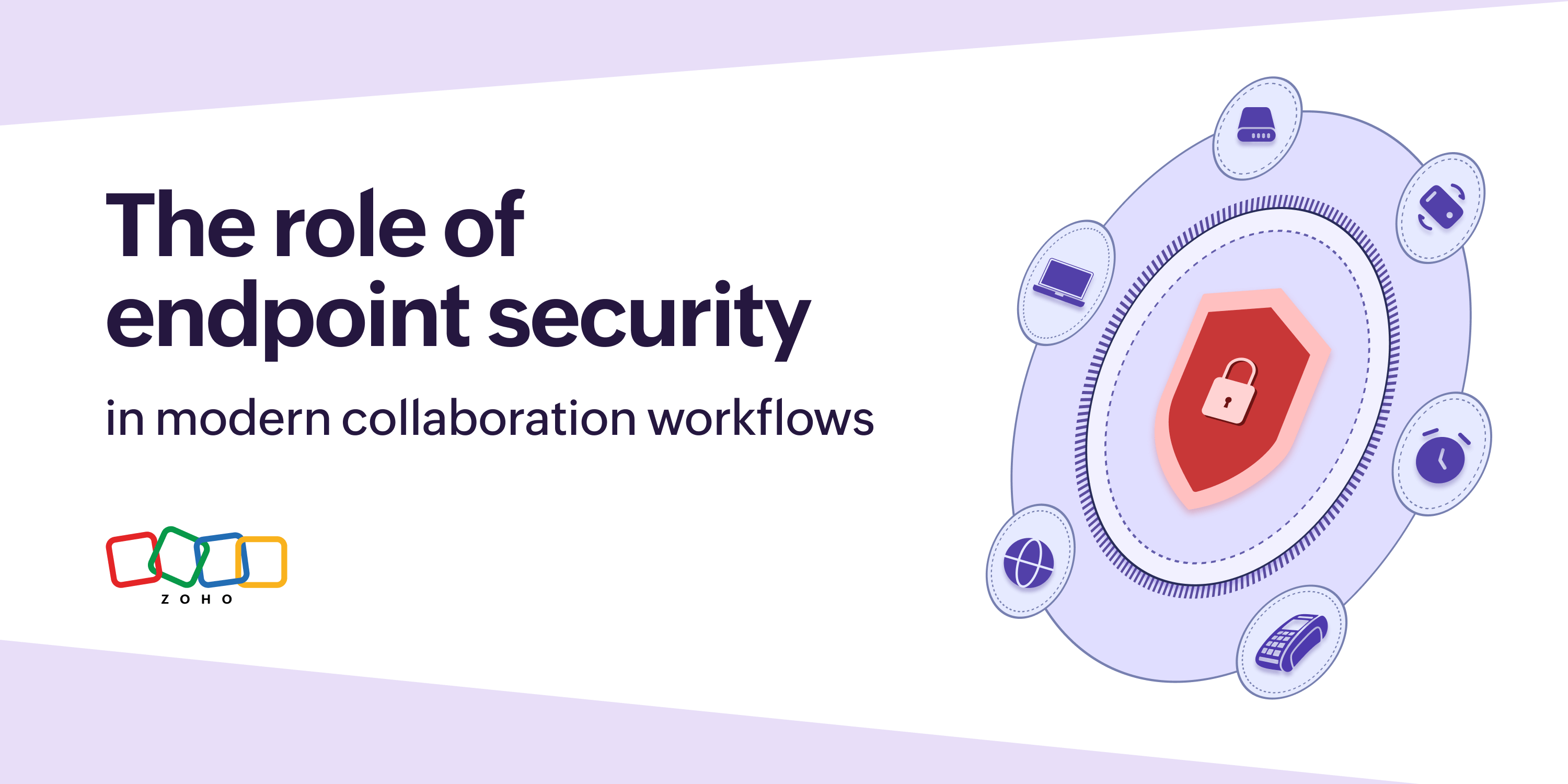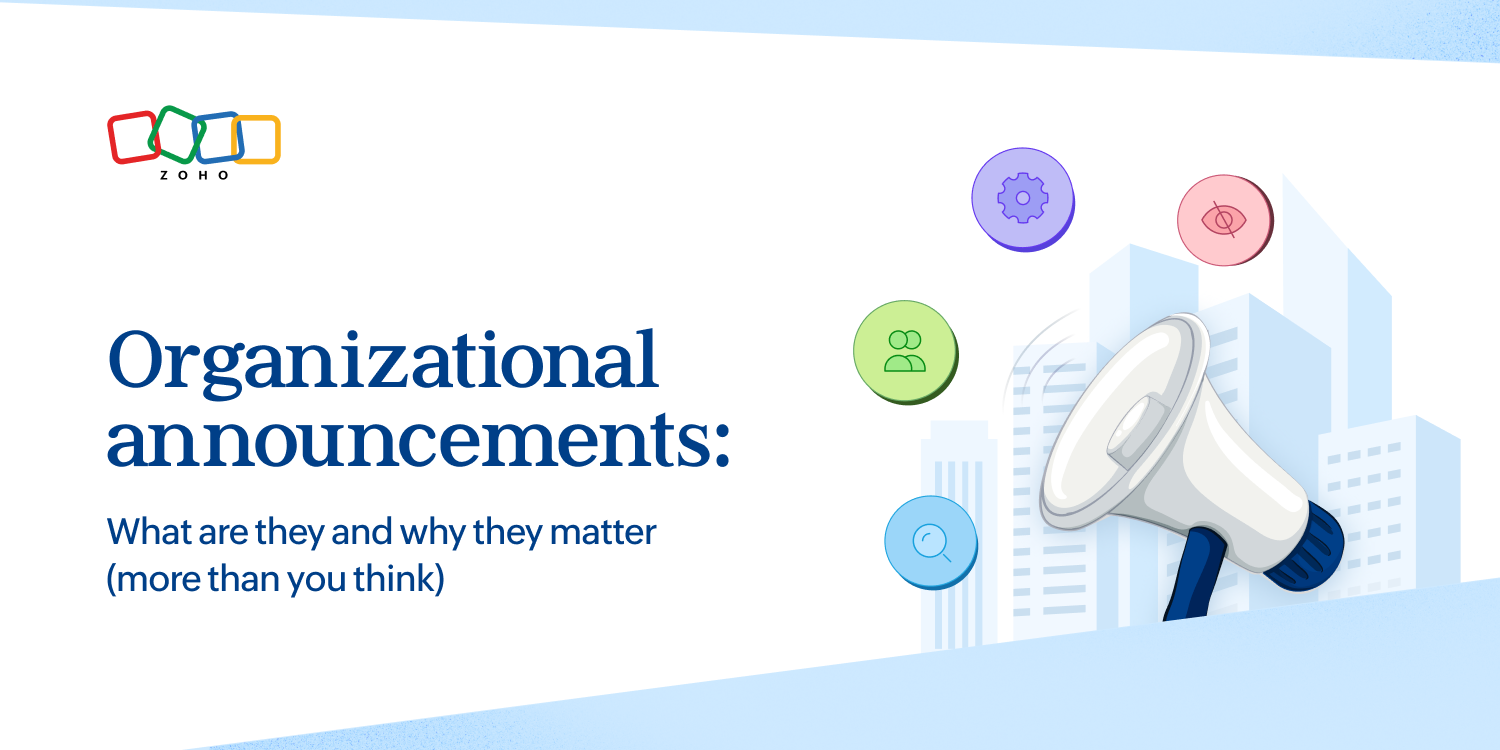- HOME
- All Products
- Collaboration
- The power of teamwork in the modern workplace
The power of teamwork in the modern workplace
- Published : November 15, 2024
- Last Updated : December 20, 2024
- 1.4K Views
- 7 Min Read
Teamwork is more than just a corporate buzzword. It’s the backbone of a productive, innovative, and collaborative work environment. Because the workplace is so interconnected, the success of any project relies heavily on the ability of team members to come together and efficiently work towards shared goals. A team is only as strong as its weakest link.
And if they intend to strengthen each link, understanding how to foster a culture of effective teamwork is essential for any organization looking to thrive.
In this blog post, we'll take a deeper dive into the importance of teamwork, how it impacts productivity, and actionable ways to enhance team collaboration.

The benefits of teamwork
Teamwork produces a range of significant benefits that go beyond merely achieving set goals. It creates a cohesive environment where individuals feel a shared responsibility and pride in the success of the group. Some of the benefits of working as a team include:
Diverse perspectives lead to better solutions
It’s been scientifically proven that teamwork brings together individuals with different backgrounds and experiences. This diversity fuels creativity and allows for more comprehensive problem-solving, as various viewpoints are considered and integrated. There’s no way to tell when someone might have just the right set of experiences and skills.
Shared workload reduces stress
When tasks are distributed evenly among team members, no single person feels overwhelmed. This equitable sharing of responsibilities prevents burnout and promotes a more sustainable pace of work, enhancing long-term productivity. Likewise, resources are allocated more efficiently, which means the company as a whole benefits in more ways than one.
Improved communication and collaboration
Working closely as a team encourages open channels of communication, which not only strengthens relationships but also ensures everyone stays aligned with the project’s objectives. Simply put, team members are more likely to be closer to colleagues who invest effort because it allows them to make a positive conclusion about their character.
Faster decision-making and execution
Teams that operate with a collaborative mindset can make faster, more informed decisions. With multiple minds contributing to solutions, execution becomes smoother and more efficient, reducing delays. Likewise, approaches such as deep work are more achievable, as the team will take care of regular tasks and have more time to focus on the most meaningful ones.
Greater accountability and ownership
In an environment where teamwork is emphasized, members feel accountable not just to their tasks but to the entire team's success. This collective accountability enhances motivation and a sense of ownership over outcomes.
Increased adaptability
A team that works well together can adapt quickly to changes in the business landscape or project requirements. It’s because flexibility and shared problem-solving enable teams to pivot more effectively in times of uncertainty. Everyone will know that everyone else will also match the effort, which means even the most demanding projects will seem minute.
Key elements of successful teamwork
For teamwork to be successful, it requires more than just putting a group of people together and expecting them to cooperate effectively. Several key elements underpin the foundation of productive teamwork.
Clear roles and responsibilities
Teams function effectively when each member knows their role. Uncertainty often leads to miscommunication, duplicated efforts, or missed deadlines. In contrast, efficient role designation leads to an uptick in effective teamwork and motivation because no one will waste time second-guessing what they have to do.
By setting clear roles and expectations for each team member, organizations can ensure that everyone knows exactly what is required of them, reducing friction.
Team leaders can play a crucial role here by breaking down larger goals into smaller, actionable tasks and assigning them based on individual strengths. Clarity in roles reduces misunderstandings, increases accountability, and helps teams align with the larger goal.
Effective communication
Communication is the glue that holds teams together. Without open lines of communication, even the most talented teams can falter. Effective communication within teams includes active listening, empathy, transparency, and respect.
Teams that have established protocols for regular check-ins, status updates, and open forums for discussion are more likely to succeed. Tools like Zoho Workplace enable teams to stay connected with real-time updates and asynchronous communication options, which are especially useful for remote or hybrid teams.
Trust and respect
Trust and mutual respect are integral to fostering effective collaboration. When team members trust each other, they're more likely to collaborate honestly, share ideas without hesitation, and take ownership of their tasks.
Building trust within a team doesn’t happen overnight—it requires consistent effort from each team member. Encouraging social interactions, celebrating successes, and dealing with conflicts transparently can help foster a culture of trust. Respecting each individual's contribution and acknowledging diverse skill sets can strengthen team cohesion.
Challenges related to teamwork
While the benefits of teamwork are clear, fostering and maintaining a high level of collaboration comes with its own set of challenges. Without proper attention, these challenges can erode the very foundation of teamwork, leading to frustration and inefficiency.
Diverse perspectives can lead to conflicts: While diversity is a strength, differing opinions and approaches can sometimes create tension within a team. Managing these conflicts in a constructive way is crucial to ensuring that the team remains focused and unified.
Uneven contribution: On some teams, certain members may take on more responsibility while others may not contribute equally. This imbalance can cause resentment and hinder overall performance if it's not addressed promptly.
Communication breakdowns: Miscommunication or lack of clarity in roles and expectations can lead to confusion, duplicated efforts, or missed tasks. Ensuring that everyone is on the same page requires ongoing communication, which can be challenging in dynamic environments.
Groupthink: Sometimes, in the spirit of team harmony, members may hesitate to challenge ideas or propose alternatives. This leads to groupthink, where creativity and critical thinking are stifled, and suboptimal decisions are made.
Balancing individual and team goals: While team success is essential, individual aspirations and career development can sometimes clash with collective goals, even if they’re SMART. Striking the right balance between team objectives and personal growth opportunities is key to maintaining motivation.
Tools and strategies to improve teamwork
While the concept of teamwork is straightforward, putting it into practice requires dedication and the right tools and strategies. Technology, in particular, can significantly impact how efficiently teams collaborate.
Leveraging collaboration platforms
Collaboration platforms such as Zoho Workplace play a crucial role in enhancing teamwork by bringing all team communication, file sharing, and task management into one central hub. With the availability of online collaboration tools, teams can now work together seamlessly, regardless of location or time zone.
Zoho Workplace, for instance, offers features like chat channels, project management, shared document editing, and video conferencing—all of which can eliminate silos and help ensure that everyone is on the same page. Integrating these platforms can reduce email clutter and streamline information sharing, making it easier for team members to contribute in the moment.
Encourage regular feedback
Constructive feedback is one of the most effective tools for improving team dynamics. Regular feedback helps identify strengths and areas for improvement, offering opportunities for personal growth and better team collaboration.
Encouraging both formal and informal feedback allows team members to express concerns, offer suggestions, and resolve issues before they escalate. Leaders should foster an environment where feedback is not only received well but also acted upon. Tools like surveys or regular one-on-one meetings can facilitate consistent and meaningful feedback.
Set shared goals
Successful teams work towards shared objectives. When team members are aligned on the overarching goals, they can focus their efforts in a more coordinated and purposeful manner.
Clearly defined goals—both at the project and individual level—ensure that everyone knows what success looks like and how to achieve it.
Using the SMART (Specific, Measurable, Achievable, Relevant, Time-bound) goal-setting framework can help teams create actionable and attainable goals that keep everyone motivated and on track.
Why a result-heavy approach is a thing of the past
In the modern workplace, the traditional focus on results—such as quotas, deadlines, and KPIs—has gradually given way to a more holistic understanding of success.
While these metrics are undeniably important, they often fail to capture the nuances of team dynamics and the less tangible factors that drive sustained performance.
A result-heavy approach assumes that outcomes alone tell the whole story, but in reality, they often overshadow the processes and interpersonal connections that foster long-term success. One reason for this shift is the realization that overemphasizing results can lead to burnout, poor morale, and a toxic work environment.
Teams that are pressured to focus solely on deliverables may resort to short-term tactics that undermine innovation and creativity. This also puts managers in an uncomfortable position, resulting in wider organizational and hierarchical friction.
When success is defined purely by tangible outcomes, it neglects the importance of how the work gets done—whether the team collaborates effectively, supports one another, and creates an environment where new ideas can flourish.
Fortunately, organizations are increasingly recognizing that process-driven metrics, such as communication quality, emotional intelligence, and team cohesion, are just as vital as meeting goals. These "soft" factors are the glue that holds a team together, ensuring that they can consistently meet challenges and deliver over time without compromising the team's well-being.
Conclusion
Teamwork is more than just the sum of individual contributions; it’s the driving force behind innovation, resilience, and sustained success. By focusing on both tangible outcomes and unseen elements like emotional intelligence, psychological safety, and collaboration, teams can unlock their full potential.
Measuring these intangibles and addressing challenges head-on ensures that teams not only meet their goals but thrive in an ever-evolving workplace. In today's landscape, moving beyond a purely result-driven approach leads to a more dynamic, adaptable, and high-performing team.
 Gary Stevens
Gary StevensGary Stevens is the CTO of Hosting Canada, a website that provides expert reviews on hosting services and helps readers build online businesses and blogs. Gary specializes in topics on cloud technology, thought leadership, and collaboration at work.


